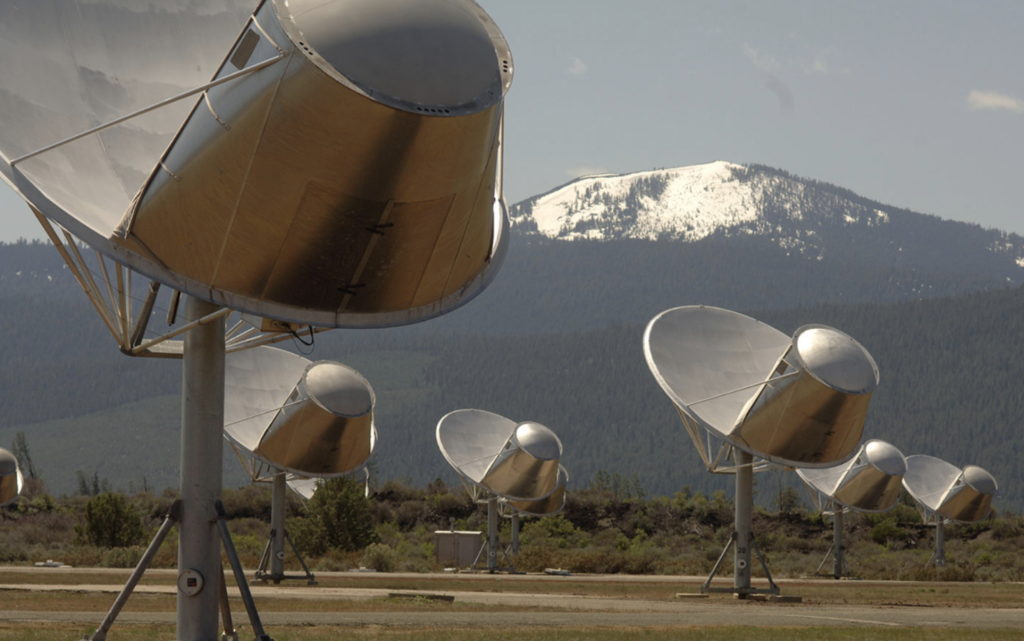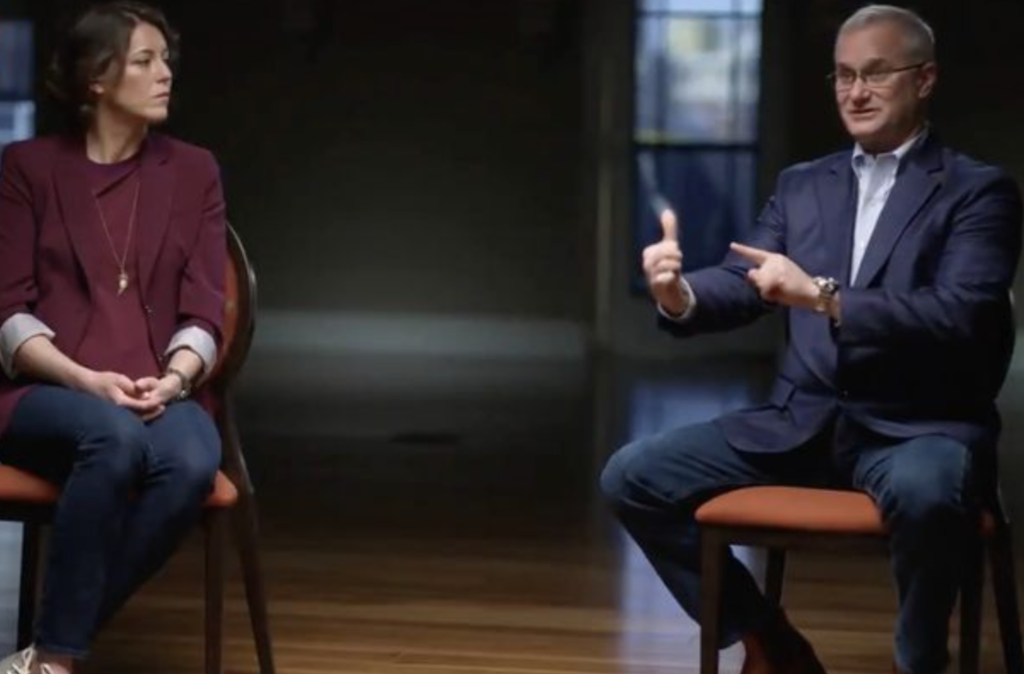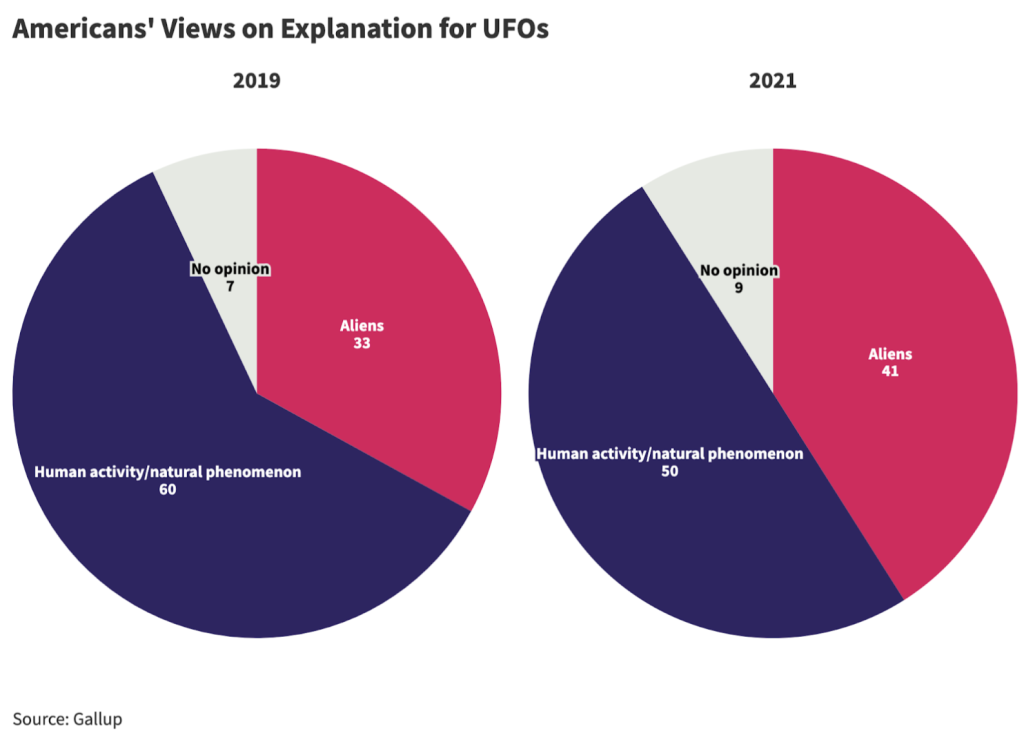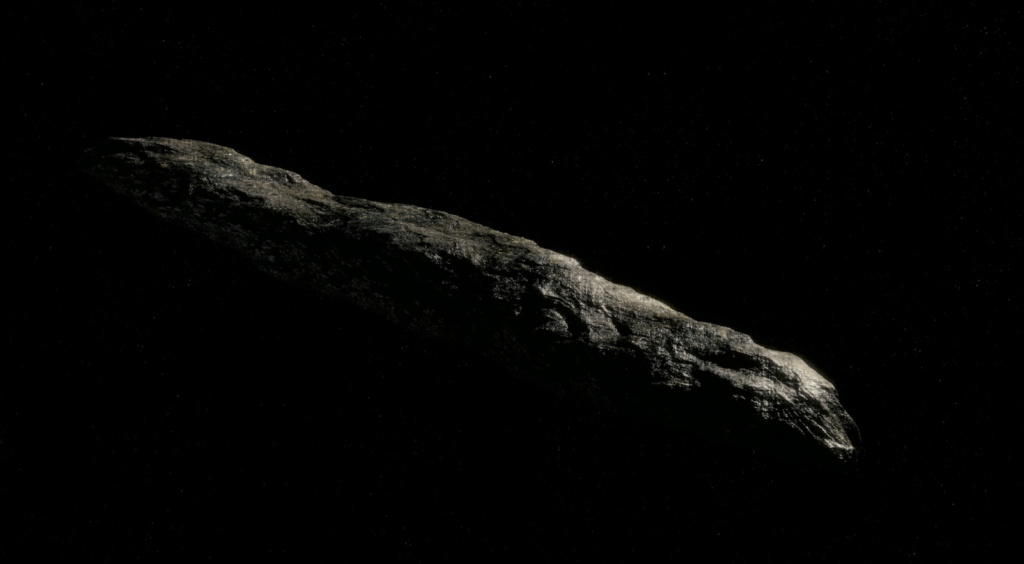Will artificial intelligence help us find evidence of UFOs?
SOURCE: SIFTED.EDU
FEB 21, 2022

“Are we alone in the universe?” is one of humanity’s biggest questions. But now, some of the world’s top scientists and tech companies are setting out to answer an even bigger question: “Are we being visited?”
This used to be seen as a silly topic for debate, confined to conspiratorial subreddits filled with stories of reptilian alien overlords covertly living among us. But things are starting to change.
Last year, not only did US president Biden approve a new US government office to study the nature of unidentified flying objects, but a distinguished academic, Professor Avi Loeb — the longest serving chair of Harvard’s Department of Astronomy — launched The Galileo Project, a search for UFOs.
And one difference this time is that artificial intelligence is being drafted into the search. Tel Aviv-founded AI startup Timbr, for example, has offered its technology — which allows users to interact with complex databases using simple queries — to the project.
If ET’s out there, AI may finally allow us to spot them.
Is this really serious?
Well, serious people from the US government have certainly started to take UFOs a lot more seriously recently. In May last year, Barack Obama admitted that there really are objects moving in our skies that can’t be easily explained away: “There’s footage and records of objects in the skies, that we don’t know exactly what they are, we can’t explain how they moved, their trajectory… They did not have an easily explainable pattern.”
A month later, the US government released a report confirming that US military personnel have encountered things in the sky that appeared to be real, physical objects that display “advanced technology”.
Christopher Mellon, a former senior US defence official, commented that not only are UFOs a national security threat, but that they are unlikely to represent advanced Chinese, Russian or US technology. “That leaves you wondering then what hypothesis best fits the facts and frankly the alien hypothesis fits the facts,” he said.
By the end of 2021, President Biden signed off on a new US government office that will try to analyse the nature of what these UFOs really are, with national security in mind.
The devil is in the data
It is not just the government getting in on the action. The Galileo Project describes itself as a privately funded initiative promising to “bring the search for extraterrestrial technological signatures of Extraterrestrial Technological Civilisations from accidental or anecdotal observations and legends into the mainstream of transparent, validated and systematic scientific research”.
Unlike the long-running Search for Extra-Terrestrial Intelligence (SETI) Institute, which uses antennae to search for radio signals from possible alien neighbours, The Galileo Project is looking for physical objects.

SETI’s radio antennae
Loeb plans to build 100 specialised telescopes equipped with wide angle lenses, infrared technology, radio receivers and an audio system. This data will be combined with satellite imagery, to create a more comprehensive and high-resolution picture of our skies than we’ve ever seen before, from above and below.
And part of the secret of doing this will be an AI system that can make sense of the gargantuan amount of data generated by 100 multi-sensor telescopes recording pictures of the sky 24/7.
“We will have an artificial intelligence system that will identify whether we are looking at a bird, a drone, an aeroplane or something else,” Loeb tells Sifted.

Avi Loeb, chair of Harvard’s Department of Astronomy. Credit: Lotem Loeb
How will AI know how to identify aliens?
Tzvi Weitzner, the Tel Aviv-based Timbr’s cofounder and chief strategy officer, says that the project presents a unique challenge for a machine learning algorithm.
“The use of AI to analyse images is widely known, but in Galileo’s case it is not as simple as training a machine learning algorithm to identify objects, just because we don’t know what we are looking for, or, more exactly, we are looking for objects that are not part of an existing image catalogue that would serve to train a machine learning algorithm,” he tells Sifted.
Using Timbr’s system, data scientists working with the Galileo Project will be able to systematically refine the algorithm’s understanding of objects that are truly mysterious.
“I expect that the algorithms used to analyse images shall generate a continuous flow of unexplained objects, described with a set of data from the observations, which will require classification by characteristics (size, shape, colour, location, time, source, etc),” says Weitzner. “Data scientists will be able to easily discover and select the data required to create and train new machine learning algorithms that will further reduce false positives and eventually deliver a ‘clean’ list of observations that cannot be explained as known objects.”
Weitzner also stresses that his comments don’t reflect the position of Loeb or The Galileo Project, as these workflows are yet to be finalised.
A big tent
The Timbr cofounder thinks that investigating the UFO phenomenon is important, even if he doesn’t personally believe in extraterrestrial explanations for sightings.
“I have always disregarded these kinds of observations (UFO sightings), as errors or, you know, bad data,” he says. “What we can do — and it is very important — is try to explain what we have observed, and to try to not just disregard what we cannot explain.”

Tzvi Weitnzer, Timbr cofounder
Having sceptics like Weitzner on board with The Galileo Project is important to Loeb, who says he is trying to let the evidence do the talking, rather than be dragged into polemic.
“I have built a big tent, including people that are both advocates for extraterrestrial origins of these objects, and people that are sceptics. I think that it doesn’t matter what you believe in to start with, it’s the evidence that will guide us,” he says. “The way to move forward is to collect evidence, to collect data, the way that the scientific method advocates and not have prejudice.”
Alongside big names from the worlds of academia and astrophysics, The Galileo Project is also affiliated with data analytics startup ThoughtAI, tech investor Yoav Kfir from Israel-based VAR Management, and Google software engineer Uriel Perez.
But despite increasing support from the private sector, Loeb believes that dogma within the scientific world is holding this research back.
Ridicule
Despite including renowned critics of the alien hypothesis in The Galileo Project’s team, and focusing on a strictly evidence-based approach, the Harvard astrophysicist has received personal attacks for his interest in investigating UFOs.
“[Some scientists] were attacking me on social media in ways that are very personal. And that was really unfortunate,” Loeb says. “People are ignoring the scientific method. It’s similar to the way philosophers behaved in the days of Galileo. They refused to look through Galileo’s telescope, they didn’t look at the data. They said, ‘We know that the sun moves around the Earth’, and they put Galileo under house arrest. Today, they would have cancelled him on social media.”
He believes that the reason for the mainstream dismissal of UFO research is very similar to why people were so offended by Galileo’s ideas that the universe didn’t revolve around the Earth: human exceptionalism. If we are to accept that some other intelligence might have visited us, we have to accept that we might not be the most advanced civilisation out there.
“I think it has to do primarily with the ego of people. We don’t want to hear about the reality where we are not the smartest,” says Loeb.
But flying in the face of such a stigmatised field of research, he believes he’s paving the ground for more mainstream scientists to be open about their curiosity: “Some scientists came to me and said, ‘We didn’t have this safe space. We were waiting for it so that we can work on the subject.’”
Weitzner is one of those who appreciates the rigorous, evidence-based approach that Loeb is bringing to the study of UFOs, seemingly unconcerned about receiving ridicule for having Timbr’s name attached to the project.
“The scientific community at large may view Galileo as a fringe thing, but this reflects obtuseness… I think that Avi is a really fearless scientist that is willing to go where a few other scientists dare to go,” he says. “I think that it is rather cool that Timbr can somehow help in this endeavour.”
Why now?
Loeb is in a rare position in academia: he has the scientific pedigree to be taken seriously, and has achieved enough in his career to not need to worry about his reputation.
“When I was in the military at a young age they said, ‘You have to put your body on the barbed wire so that other soldiers could pass through,’” he says. “This is a subject that will have a huge impact on humanity. And as a result, I feel that it’s worth putting my body on the barbed wire, so to speak.”
The Galileo Project’s search for evidence has partly come about as a result of credible UFO sightings in recent years. The most famous is the so-called “TicTac” incident, where top gun pilots David Fravor and Alex Dietrich testified to having encountered a flying, “TicTac-shaped” object that completely outmanoeuvred their fighter jets, with the incident corroborated by radar.

Alex Dietrich and David Fravor on 60 Minutes
Stories like this, where the typical explanations of hallucination don’t seem to fit, are piquing the public interest. A report from Gallup in 2021 showed that four in ten Americans now believe that UFOs are explained by aliens, up from just over three in ten in 2019.
Loeb’s interest in the topic began after he analysed a large and mysterious interstellar object passing near Earth in 2017 (now known as Oumuamua), and deduced that it was very unlikely to be of natural origin.
As well as building ground equipment, The Galileo Project is also working on developing a probe with a camera attached. This will be launched into space the next time such an object is spotted in the distance from a telescope, to try and get a clear photo from closer up.

Not so out-of-this world
Getting a clear image is crucial, says Loeb, batting away the question of why it is that, when billions of people in the world own mobile phone cameras, no one has yet captured a decent image of a UFO.
“A million low resolution images are not worth as much as one high resolution image,” he argues. “You can increase the number of cell phones by a factor of 100 — it doesn’t matter — all those images would be taken by an aperture that is only a few millimetres in size and as a result the resolution would be poor and the images would appear fuzzy.”

An artist’s depiction of Oumuamua
And what about the argument that, if aliens exist and are able to visit us, why haven’t they made themselves known or tried to communicate with us?
“Think of how we communicate with ants on the pavement. Are we going to the ants and trying to understand their psychology and trying to communicate? If you operate on a completely different level, there is no communication. So the ants might be frustrated that humans are not stopping in the street and coming to speak with them. They might see some footsteps above them, but I don’t know if they figure out what’s going on,” he responds.
He also disregards the point that aliens travelling between star systems seems implausible, as our current understanding of physics dictates that light-speed travel is impossible.
“It [another intelligence] may be using technologies that are way different than what we anticipate,” he says.
The Galileo Project has received enough funding to build its first telescope, which will be placed on the roof of the Harvard astronomy department (Loeb hopes by April), but still needs more donations to build more telescopes. Loeb says that if people are hoping to donate more than $50k, they should contact him directly.
Ultimately, he believes the research is less speculative than many areas of scientific study that routinely attract billions of dollars in public funding — such as the search for dark matter — given that it’s estimated there are some 6bn earth-like planets in the Milky Way galaxy alone.
“What is so speculative about saying, ‘Let’s imagine something like us, or more advanced than us,’? Because half of the sun-like stars have a planet the size of the Earth, roughly the same separation (between star and planet), so you roll the dice about intelligent technological civilisations billions of times in the Milky Way galaxy alone, most of the stars formed a billion years before us, and they could have sent equipment into space, just like we did. I don’t see that as speculative, I think it’s much more down to earth than most of the ideas in theoretical physics right now.”
Tim Smith is Sifted’s Iberia correspondent. He tweets from @timmpsmith
LATEST NEWS
Augmented Reality
Hi-tech smart glasses connecting rural and remote aged care residents to clinicians
NOV 20, 2023
WHAT'S TRENDING


Data Science
5 Imaginative Data Science Projects That Can Make Your Portfolio Stand Out
OCT 05, 2022

AI Is Set To Change Fertility Treatment Forever
SOURCE: HTTPS://CODEBLUE.GALENCENTRE.ORG/
NOV 06, 2023
AI-empowered system may accelerate laparoscopic surgery training
SOURCE: HTTPS://WWW.NEWS-MEDICAL.NET/
NOV 06, 2023
Here’s Everything You Can Do With Copilot, the Generative AI Assistant on Windows 11
SOURCE: HTTPS://WWW.WIRED.COM/
NOV 05, 2023
Tongyi Qianwen, An AI Model Developed By Alibaba, Has Been Upgraded, And Industry-specific Models Have Been Released
SOURCE: HTTPS://WWW.BUSINESSOUTREACH.IN/
OCT 31, 2023
Stability AI Launches Stable Audio — Generate Music Using Artificial Intelligence
SOURCE: HTTPS://WWW.DIGITALMUSICNEWS.COM/
SEP 13, 2023
Ikigai Labs: $25 Million Raised To Advance Generative AI For Tabular Data
SOURCE: HTTPS://PULSE2.COM/
AUG 27, 2023




